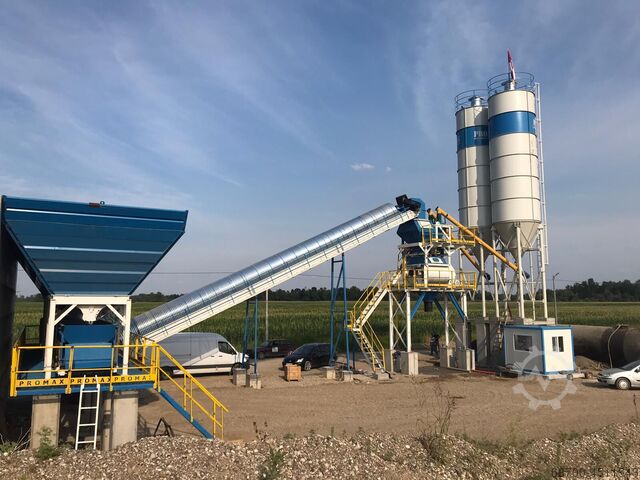Used Packing Plant for sale (5,249)
 Switzerland
Switzerland Mobile concrete mixing plant
PROMAX Mobile Concrete Batching PlantMobile Concrete Batching Plant
 Zuid-Holland
Zuid-Holland Turn-tilt welding table
Key Plant AutomationEHVP-3
 Fenwick
Fenwick End of line tray/box fillers
Case packing systemsCLP case packer
 Spain
Spain Mobile concrete mixing plant
PROMAX Mobile Concrete Batching PlantMobile Concrete Batching Plant M100-TWN
 Andernach
Andernach Container turning device
Key Plant AutomationPR3
Discover more used machines
 Montluçon
Montluçon Mobile concrete mixing plant
PROMAX Mobile Concrete Batching PlantMobile Concrete Batching Plant
 Andernach
Andernach Face-turning table-welding turntable 120t
Key PlantPlandrehtisch TT-120
 Bern
Bern Stationary concrete mixing plant
PROMAX Concrete Batching PlantS100-TWN (100m3/h)
 Andernach
Andernach Container turning device
Key PlantSAR60
 United Kingdom
United Kingdom Stationary concrete mixing plant
PROMAX Compact Concrete Batching PlantС60-SNG PLUS (60m³/h)
 Andernach
Andernach Container turning device
Key PlantSAR40 Anti-Drift
 Andernach
Andernach Container turning device
Key PlantSAR50
 Nordrhein-Westfalen
Nordrhein-Westfalen Plant for packaging & stacking
Robotic Systemfor Carton Packaging and Stacking
 Bury St Edmunds
Bury St Edmunds Milk & dairy production
PackoRotary drum IQF freezer ex cheese plant
 Nordland
Nordland Grading plant
KeestrackFrontier screening plant – SEE VIDEO
 YENİMAHALLE/ ANKARA /
YENİMAHALLE/ ANKARA / Concrete mixing plant
Polygonmachmobile 60m3/hour concrete batching plant
 Janville
Janville Packing machine
GroningerKFVG251 + DTE 1000
 YENİMAHALLE/ ANKARA /
YENİMAHALLE/ ANKARA / Crushing plant
PolygonmachVSI-900 VERTICAL SHAFT IMPACTOR
 Janville
Janville Packing machine
Kalix KPS
 YENİMAHALLE/ ANKARA /
YENİMAHALLE/ ANKARA / Concrete mixing plant
PolygonmachPAC 30m3 hour site type batching plant- ultra m...
 Janville
Janville Packing machine
PRBPocket 3
 YENİMAHALLE/ ANKARA /
YENİMAHALLE/ ANKARA / Crushing plant
PolygonmachVSI-800 VERTICAL SHAFT IMPACTOR
 Janville
Janville Packing machine
BauschESA 1025
 YENİMAHALLE/ ANKARA /
YENİMAHALLE/ ANKARA / Crushing plant
PolygonmachPTV800 track mounted vertical shaft impactor
 YENİMAHALLE/ ANKARA /
YENİMAHALLE/ ANKARA / Crushing plant
PolygonmachPTS155 1500x5000mm 3 decks track screen
Used Packing Plant (5,249)
Search Machineseeker now with more than 200,000 used machines:Browse through the most popular machine descriptions:
This may be of interest to you


















































































































































































































































